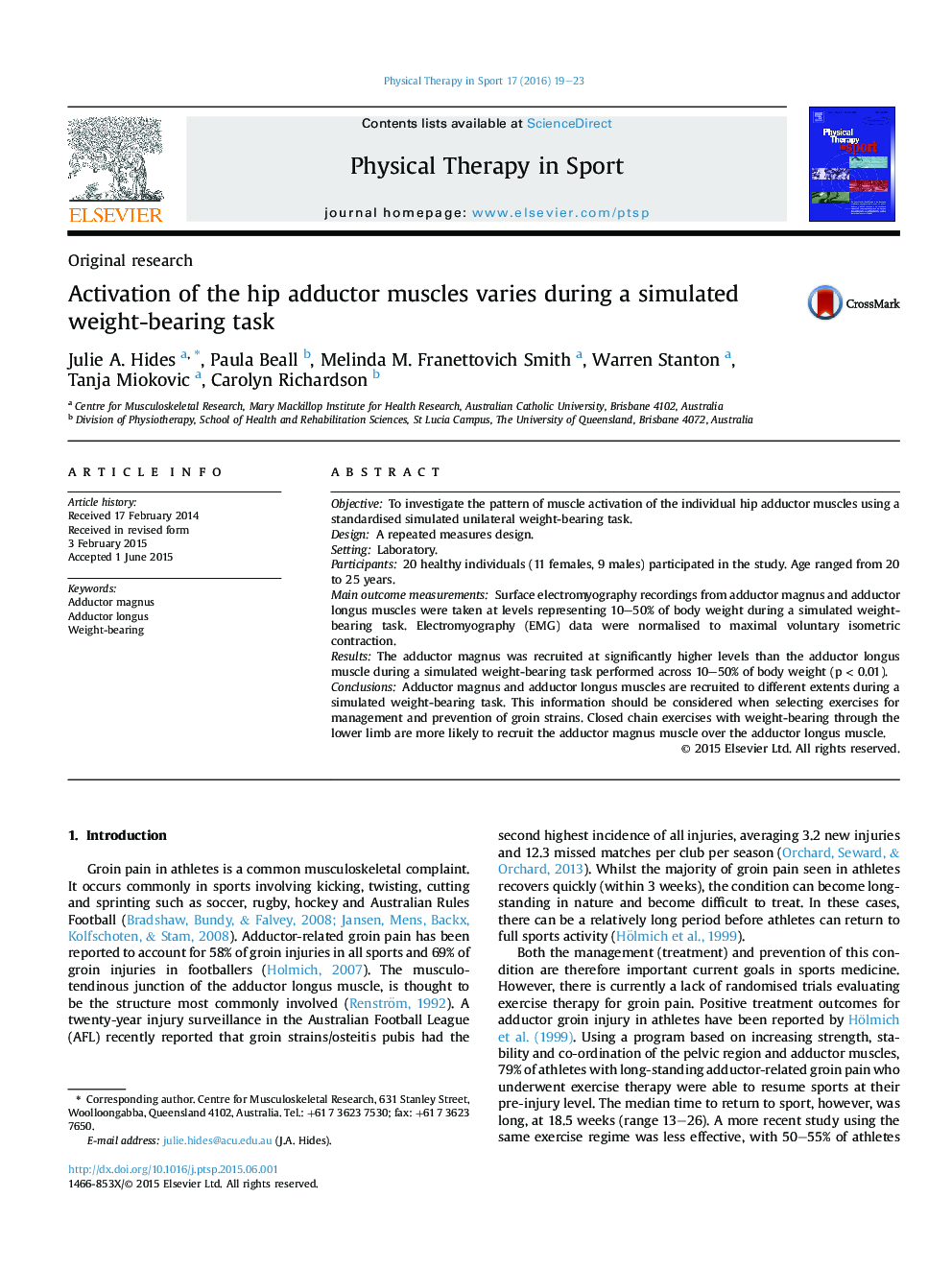| Article ID | Journal | Published Year | Pages | File Type |
|---|---|---|---|---|
| 2709888 | Physical Therapy in Sport | 2016 | 5 Pages |
•A simulated weight-bearing task recruits the hip adductor muscles differently.•Adductor magnus activity is greater than adductor longus in simulated weight-bearing.•Increased adductor magnus activity occurs with increased levels of weight-bearing.•Closed chain, weight-bearing exercise is more likely to recruit adductor magnus.
ObjectiveTo investigate the pattern of muscle activation of the individual hip adductor muscles using a standardised simulated unilateral weight-bearing task.DesignA repeated measures design.SettingLaboratory.Participants20 healthy individuals (11 females, 9 males) participated in the study. Age ranged from 20 to 25 years.Main outcome measurementsSurface electromyography recordings from adductor magnus and adductor longus muscles were taken at levels representing 10–50% of body weight during a simulated weight-bearing task. Electromyography (EMG) data were normalised to maximal voluntary isometric contraction.ResultsThe adductor magnus was recruited at significantly higher levels than the adductor longus muscle during a simulated weight-bearing task performed across 10–50% of body weight (p < 0.01).ConclusionsAdductor magnus and adductor longus muscles are recruited to different extents during a simulated weight-bearing task. This information should be considered when selecting exercises for management and prevention of groin strains. Closed chain exercises with weight-bearing through the lower limb are more likely to recruit the adductor magnus muscle over the adductor longus muscle.
